A text by Shosh Averbukh for Lena Zaidel´s catalogue: Broken Hearted City Center, 2012
All the Places Are Holy III / Shosh Averbukh

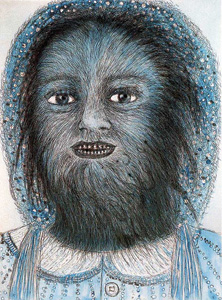
Feminist artist Kiki Smith examines the role of the wolf, specifically in the display dealing with the story of Little Red Riding Hood. Smith explores the wolf´s role and its “otherness”. She rejects the common view of the relationship between the wolf and Little Red Riding Hood, stresses the resemblance between the characters rather than their differences. The print Wolf Girl (1999; ill. 2) demonstrates and emphasizes the characters´ similarity. In Zaidel´s work, the wolf appears in order to warn of the Israeli-Arab conflict, the demise of the Zionist dream, as well as interfaith tension, which distances people from a dimension of universal spirituality.
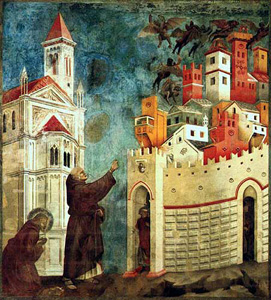
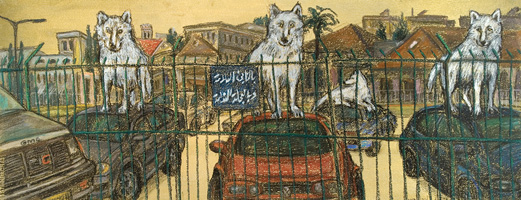
periodic styles are combined in Zaidel´s work, from the Middle Ages through early Renaissance and contemporary art. Zaidel´s focus on Jerusalem´s colorful building façades suggests church frescoes, especially those of Giotto di Bondone at Basilica of Saint Francis of Assisi (ill. 3).
In Wolves of the Gospel (ill. 11), white wolves appear as part of the Christian motifs, replacing the traditional white dove The wolves perch on automobile roofs, the towers of East Jerusalem in the background.
Zaidel´s work echoes the miniature images painted on lacquered boxes in Russian folk art (Palekh), familiar from her childhood. Zaidel enlarges miniature scenes until they are enormous, yet the images retain a fairytale spirit. The paintings´ format suggests a comic strip depicting the wolves´ journeys.
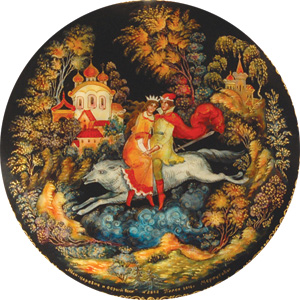

Many Israeli artists address the blend of holy and secular realms, as well as react to the political and social reality. David Reeb´s screen print Wolf and Lamb (1977; ill. 5) presents the contradiction between its title, drawing on the Old Testament´s description of earthly paradise, and the print, which depicts a different scene, according to the artist´s interpretation. While Reeb expresses himself in a lucid and distinct manner, Zaidel´s work requires the viewer to unearth and decode.

Wolves in a Garage in East Jerusalem (ill. 7). This time the wolves visit Jerusalem´s seamline, the border between East and West Jerusalem. Broken and abandoned furniture are strewn about the garage; a sheet of plastic hangs, and is converted into a blue stage curtain. This color is permeated with meaning, possibly suggesting the blue stripes of the Israeli flag, or that of the sky, which has changed its color to gold. The surreal props à la De Chirico create a sense of a site of worship, where the wolves congregate for their mysterious ceremonies.

In Bulldozer (ill.10), a yellow bulldozer clears a path through the cars and wandering wolves around it. Observation leads to questions pertaining to Jerusalem´s charged reality: where will it dig? What will be built? At whose expense?
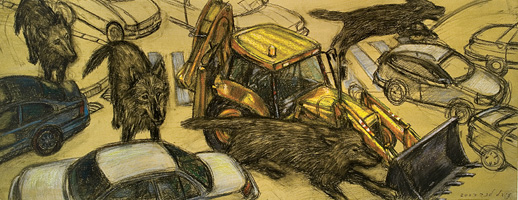
TALITHAKUMI (ill. 8) is set outside Ha´Mashbir La´Zarchan. In the background, the reconstructed façade of the Talithakumi building; in the foreground are a lone wolf and a decorated camel. The signs on the building, Ha´Mashbir Ha´Chadash La´Zarchan, the new co-op department store, and Mr. Zol, literally Mr. Cheap, are granted a new and ironic significance: ‘Mashbir´ is a word of biblical origin while Mr. Zol reflects mass consumerism. The images strengthen the sense of the absurd created during the encounter between East and West, European wolf and Middle Eastern camel, and are part of a dense and packed postcard of sorts – the Israeli melting pot.

Wolves in the Fountain of the Lions (ill. 9) is a triptych with a gold background. For the first time, a human figure appears in the center: it is the artist´s daughter. At her sides are standing two black wolves; their presence is glaringly conspicuous, yet the girl seems not to notice them. The larger wolf shakes itself off, creating rings of droplets spraying in all directions. The entire painting is set in motion: color drips, rings spiral, and the lions in the fountain seem to come to life.
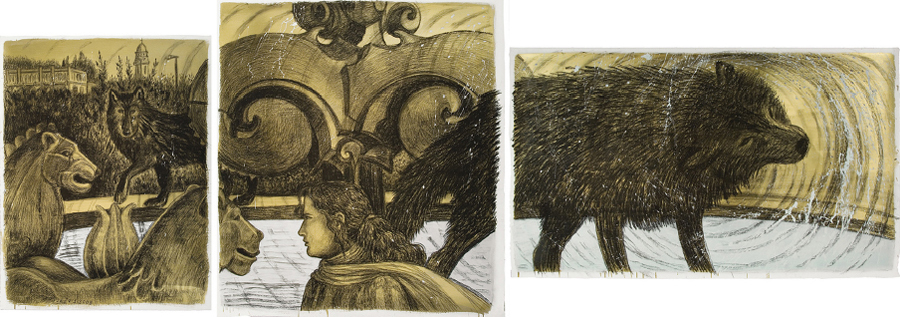
Zaidel´s work depicts a collage-like reality that is abound with contrasting images, in which construction and destruction occur simultaneously. The artist fearlessly observes her surroundings and seems to hold the key to a solution, or a cure. Zaidel constructs contemporary icons that seek sanctity in even the most earthly places. In her work, holy and secular are represented by the choice of themes and materials. Mixing charcoal, representing an earthly material, with gold, representing a celestial material, suggests alchemy. Despite her complex task, Zaidel´s attempts chart a path with her wolves are sprinkled with humor, and her work is essentially optimistic. Zaidel assumes an active role; she refrains from merely pointing out danger and death. Creation assumes an almost magic dimension, which affects the urban scene. For Zaidel, artists as shamans are capable of exploring alternative realms, retrieving lost energy and granting form to the forces that shape reality.
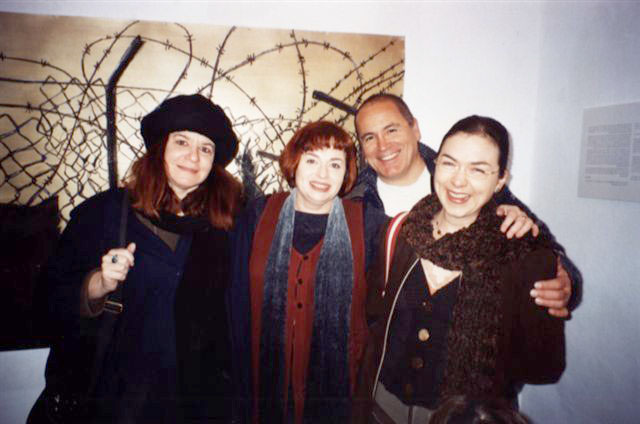
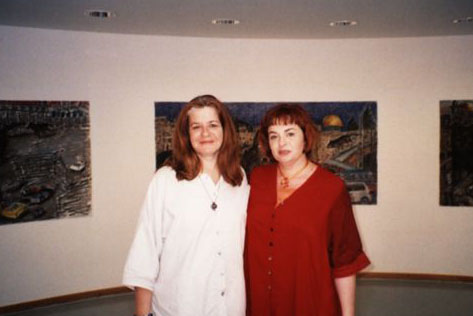
To the photos from the exhibition All the Places are Holly 1 – Click here
To the photos from the exhibition All the Places are Holly 2 – Click here
To the video from the exhibition All the Places are Holly 2, 2007,
Agripas 12 Gallery, Jerusalem – Click here
Show More